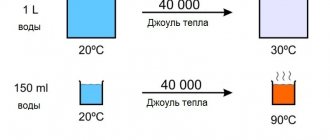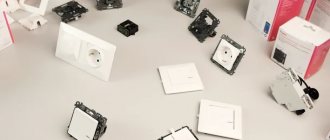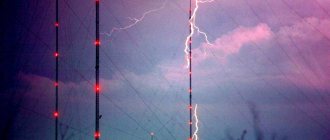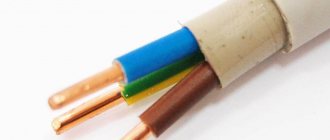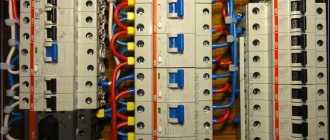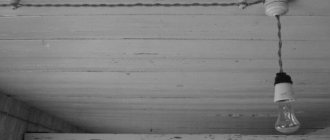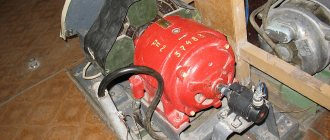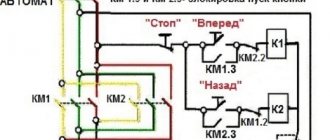Why is there a phase and a neutral, but the socket does not work?
When one power point does not work, the cause may be a loose connection or melted insulation. If during a visual inspection the cover is melted and the socket does not function, then the contact wire has burnt out. ... The problem may be in the wire itself, then you need to inspect the cable, check the condition of the core and insulation.
Interesting materials:
How to set up USB on Samsung phone? How to set up VKontakte notifications on your phone? How to set up WhatsApp on your phone? How to adjust the sound on your phone? How to learn to quickly type text on your phone? How not to lose contacts when changing your phone? How to update Android on ASUS ZenFone 5? How to update Yandex on your phone? How to update the play market on an HTC phone? How to upgrade your silicone phone case?
Electrical panel design
Before distributing the load across phases in a private house, take care of the correct “contents” of the electrical panel to which the voltage comes from the support. In this situation, it should have the following devices:
- Automatic switch (automatic).
- Three-phase electricity meter.
- Automatic switches or RCDs (residual current devices), to which each phase is supplied (separately). The common zero is connected to the zero bus.
- The protective grounding conductor is connected to the common grounding bus.
One of the options for connecting an electrical panel Source cdn.elec.ru
Breakdown into groups
Before distributing the load across phases in a private house, start separating the individual lines of the above-mentioned energy consumers. At this stage, it is necessary to prepare a separate electrical wiring line for sockets in each room and separately for light.
Wiring a cottage with a distributed voltage load Source samelectrik.ru
Correct distribution of the load by phase in a private house is carried out by laying a separate line to the most powerful energy consumers from the above list. For a clear and understandable analysis of the situation, pay attention to the plan diagram above.
Three-phase and single-phase wiring in the apartment
Many, even the most important concepts in the field of building electrification can remain mysteries for ordinary people who do not encounter them in everyday life.
Single-phase and three-phase wiring diagrams in an apartment, grounding - all these are fundamental aspects, without knowledge of which it is impossible to prepare a single electrical project for a wooden house or apartment. If we don’t talk about technical aspects that are not very necessary for the homeowner, three-phase wiring is a separate type of electricity transmission that involves transmitting current through three wires and returning one at a time.
An example of a three-phase wiring project in an apartment
Back
Forward
For clarity, it is worth noting that any wiring consists of two cables, through one the current flows to the electrical consumer, and through the second it returns. If such a circuit is broken, the current will stop flowing in both directions. This description applies to a single-phase network.
The wire through which the current flows to the consumer is usually called the phase wire, and the second through which the current returns is called the neutral wire. As the name implies, a three-phase circuit includes three phase wires and one neutral wire.
Distribution Rules
As is obvious from the above, the answer to the question of how to distribute the load across phases in a private house lies in the even division of consumers into all current-supplying conductors. A popular method is to connect a separate group of sockets in rooms to a separate phase wire. Moreover, subsequent grouping occurs in such a way as to optimize the load on the network. Lighting is connected using a similar principle; the load distribution across the phases of the conductor must be uniform.
Three-phase distribution diagram for power supply to a cottage Source samelectrik.ru
The above image shows the correct 380 volt, 3 phase connection. The private house, the electrical supply diagram of which is presented, is “wired” correctly, taking into account all the requirements.
Diagram of the correct connection of an electrical panel for a country house Source samelectrik.ru
The following image shows the correct wiring of a 380 volt 3 phase electrical panel. A private house, the technological connection diagram of which is shown in the picture, is connected correctly, which reduces the likelihood of circuit breakers turning off as a result of network overload.
Installing an outlet
In principle, installation of any type (hidden, overhead) is not much different from a single-phase socket. However, there is an important feature:
In 3-phase power sockets, the number of contacts is greater than in conventional ones. The clamping force is significantly higher. Removing the plug will require more effort: if the fastening is not secure enough, there is a risk of simply tearing the socket out of the wall. Therefore, to install such products, reliable large-diameter dowels or anchor connections should be used.
When installing such an outlet on a plasterboard wall (without a supporting capital base), you should install a reinforcing plate with an area twice the diameter of the outlet.
When connecting wires to connectors, do not allow loose tightening or distortion of the fixing elements. If possible, the ends of the conductors must be prepared: tin or sleeve the stranded conductor, or install contact terminals.
If these requirements are not met, a voltage drop may occur in one of the phases (due to poor contact), which can lead to failure of the electrical installation.
Splitting three-phase wiring in an apartment
To turn a three-phase network into a single-phase network, it is necessary that a neutral wire and grounding be added to each wire going to a separate apartment.
Ideally, the entire three-phase network has only one zero; more neutral wires are simply not required. The neutral wire is a neutral conductor where there is no voltage. In a phase-phase pair of wires, the voltage is 380 V. If there are no connected devices in a three-phase network, there is no voltage on the neutral conductor.
Below you can use the online calculator to calculate the cost of designing power supply networks:
Electrical grounding diagram
There are many examples of how grounding works. Let's assume that a breakdown occurs in the washing machine motor, due to which some of the electric current is supplied to the outer frame of the device. If there is no grounding, the electrical charge will remain on the shell of the washing machine and can pose a danger to humans; when a person touches the machine, it becomes an excellent outlet for electricity.
In this case, the ground wire can drain the current charge. The neutral conductor can also act as a grounding and is often used at power plants, but at home you should never try to make a grounding wire out of the neutral wire, since if the neutral wire breaks, all the housings of the devices grounded with its help will immediately be energized. 220 V. In most cases, in ordinary apartments a single-phase circuit is implemented. It is quite easy to distinguish a single-phase circuit from a three-phase one. If there are 2 or 3 wires in the incoming wire, then the circuit is single-phase, if there are 4 or 5 wires, then the circuit is three-phase.
To save money, current is often supplied to residential buildings through a three-phase network, but it enters the apartment through a single-phase network. The circuit is split through an input-distribution device, where a five-core cable is connected, and a three-core wire extends from it. This must be taken into account when calculating the cost of an electrical project.
When considering the method of splitting a three-phase circuit, a natural question may arise: where do the two remaining wires disappear? In reality, everything is very simple: they are used to feed other apartments within the same building. One cable can power a large number of buildings, the number of which is limited only by the capabilities of the wire itself.
Transformer substation
Transformer substations are electrical installations designed to receive, convert and distribute electricity from power lines.
Substations consist of a step-down transformer, switchgear (RU) and control devices.
Based on the method of construction and location, substations are divided into attached, built-in, and in-house. For suburban areas, mast and pole substations are the most common.
The main element of the substation is the step-down transformer. Step-down transformers can be three-phase or single-phase. Single-phase transformers are used in combination with three-phase transformers and mainly in rural areas.
The voltage in the transformers is reduced to a rated operating voltage of 380 or 220 volts. These voltages are called linear and phase, respectively. And the power supply to consumers is called three-phase and single-phase, respectively. Let us consider the types of consumer nutrition in more detail.
Phase imbalance
In fact, distributing the load across phases in a private house, performed with phase imbalance, does not pose serious problems for equipment. But you are guaranteed to periodically turn off the circuit breaker.
Before distributing the load, it is necessary to understand the structure of the three-pole circuit breaker. Let's consider the situation using the example of the C 25 machine. It consists of 3 single-phase machines, each of which can withstand 25 A. Thus, each phase receives 5 kW of power, which means that connecting a cottage with a power of 15 kW. In this case, the machines can interrupt the power with one switch (lever).
An example of load distribution on a three-phase power supply for a cottage Source mastergrad.com
If you are considering the question of how to distribute the load across phases in a random (chaotic) order, pay attention to the following example:
- Phase No. 1 is connected to the lighting of the cottage.
- Phase No. 2 supplies power to the 1st floor outlets.
- Phase No. 3 powers the outlets on the 2nd floor.
As a result, the following will happen:
- On the 2nd floor there are several bedrooms and a bathroom. There are no powerful energy consumers here. As a result, Phase 3 will not operate at full capacity.
- A similar situation will occur with phase No. 1. Modern LED lighting consumes little electricity.
- The last phase No. 2 will be overloaded, due to the fact that the main, powerful consumers are “hung” on it: a washing machine, a microwave oven, a refrigerator and other equipment located in the premises of the first floor.
Important! As a result, the simultaneous inclusion of several elements of household appliances will overload the machine, which will result in its shutdown.
How do you connect wires in junction boxes?
The question is really important. Contacts are the most vulnerable place in any electrical circuit. And today the question of how NOT to connect .
Discard all threaded connections. Anyone who has driven domestic cars and tightened threads every year will not argue with me. Under the influence of different temperatures, the bolt and nut will change their linear dimensions, and the connection will weaken, plus a poor coating, and as a result, rust. The end of contact will come quickly. Many still remember hot and melted plugs and sockets.
What remains from the last century is twisting followed by soldering. And in the new century, contacts with springs, for example from WAGO, are in first place. Installing wiring in this case can be reminiscent of playing with LEGO. But remember that the stranded wire for contact will still have to be twisted and soldered . If I am invited to a barbecue, and while it is being prepared, they ask me to help with the electrical wiring, then I will fill all my pockets with spring terminals in advance in order to quickly empty them, otherwise they will eat the meat without me. But I’ll still do the twisting for myself.
PS Who is interested in learning in detail about wiring in a wooden bathhouse or house (from the basics to practice), be sure to look at my article “Wiring in a bathhouse and steam room: rules and recommendations”
